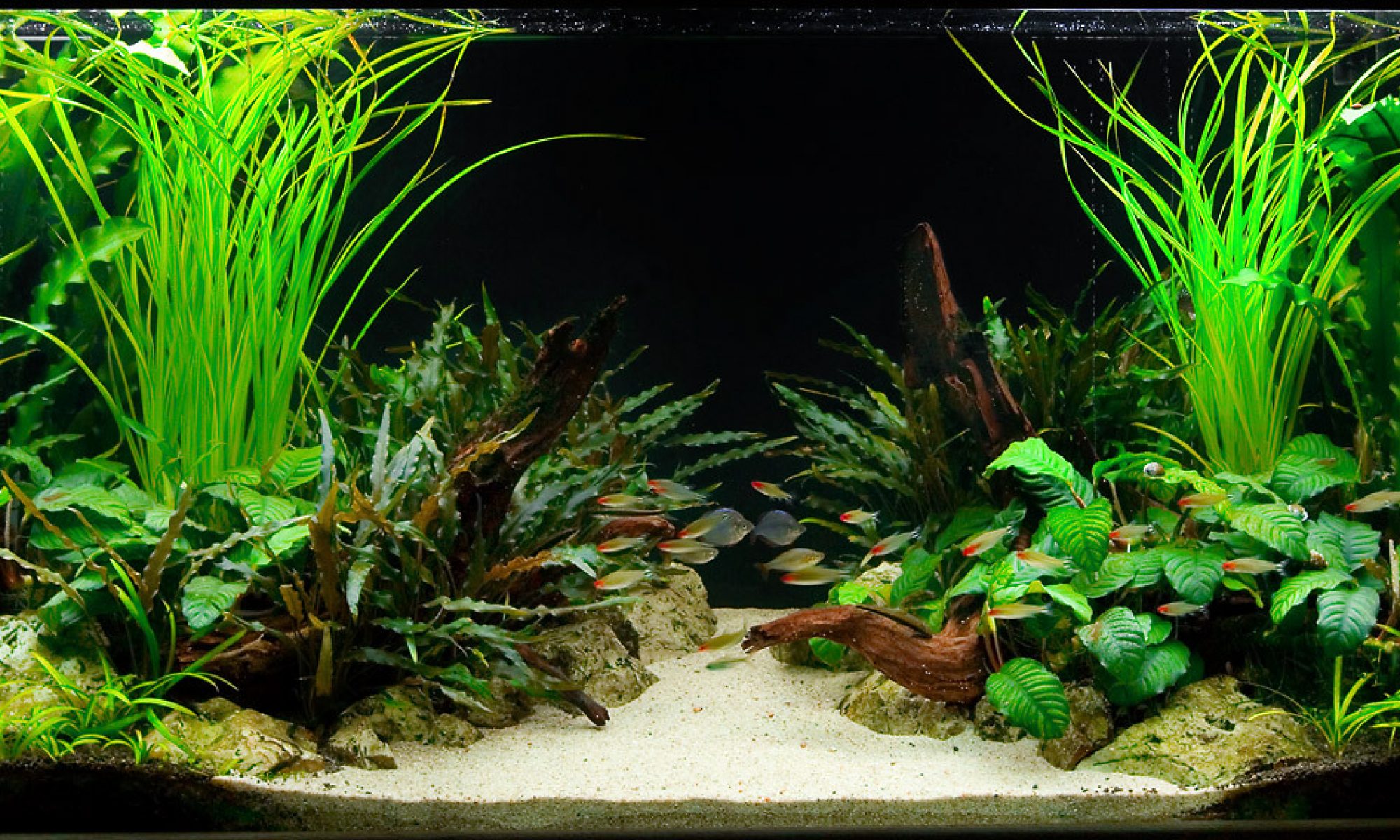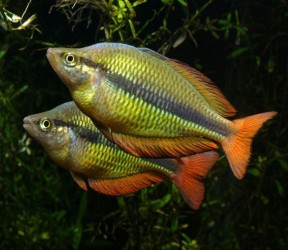The Lake Tebera rainbowfish is a species of fish in the Melanotaeniidae family endemic to the Lake Tebera basin in Papua New Guinea.
Details
| Type | Rainbowfish |
| Family | Melanotaeniidae |
| Species | Melanotaenia herbertaxelrodi |
| Synonyms | |
| Origins | The Lake Tebera basin in the Southern mountainous region of Papua New Guinea. |
| Sexual Dimorphism | Mature males are much more colourful. |
| Length | 10 cm |
| Shoaling | Yes |
| Temperature | 20 - 26 deg C |
| Water parameters | pH 6.0 - 7.5, dH 1 - 18 |
Care
The Lake Tebera Rainbowfish is a peaceful shoaling species that is ideally suited to the community aquarium, and should be kept in groups of 6 or more fish. The aquarium should be at least 4ft long, as this is an active species that needs swimming space. As with many other Rainbowfish species, the juveniles can look comparatively drab to the absolutely stunning adult fish, and so are all too often overlooked in the shops. However, once settled into the security of the planted aquarium, these young specimens will soon begin to colour up, revealing their true adult beauty. Lake Tebera Rainbowfish will not bother smaller tankmates, as their mouth/throat is too narrow to be able to swallow them. This fish is also suitable for aquariums of a slightly cooler temperature, as it can cope with quite a broad range within its natural distribution area. May also be seen on sale as the Yellow Rainbowfish.Feeding
Flake, green flake, micropellets, and small frozen foods such as mosquito larvae and daphnia. These fish thoroughly enjoy eating 'duckweed' (Lemna minor).Breeding
A separate good-sized breeding aquarium should be set up with 75% mature tank water and 25% of dechlorinated fresh water, along with a substrate of marbles. A small air-driven sponge filter (with a mature sponge) should be added to give gentle circulation and filtration. The temperature should be set at 25 deg C. A conditioned pair should then be acclimatised across to the breeding aquarium, which should be furnished with plenty of fine-leaved plants/Java moss clumps. After a time, the male will swim in front of the female, displaying the mating stripe on his forehead. He will then begin to drive the female over the plants, utilising the whole length of the tank. The eggs will be scattered over the plants a few at a time. These fish are known as 'continual spawners' which means that the spawning activity takes place over several days, even months in some cases. This can present problems to the aquarist in that some adult fish may begin to consume the eggs as they are scattered. Many fishkeepers have found the eggs to be remarkably tough and have had great success in siphoning them out into another aquarium (containing matching water from the spawning tank). The eggs will usually hatch in 7-9 days (dependent on temperature) and once free-swimming, the tiny fry can be offered infusoria, moving onto larger foodstuffs as they develop.

